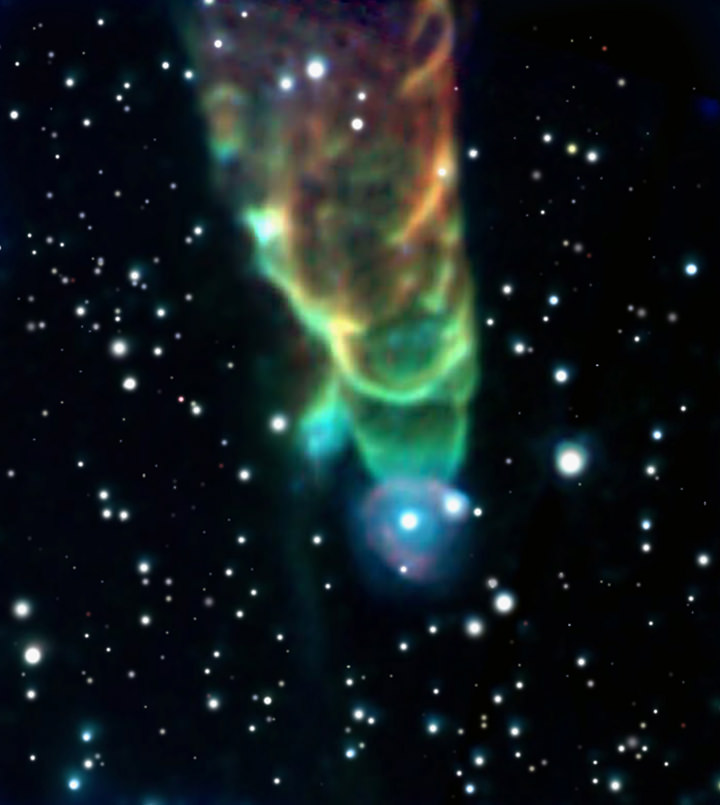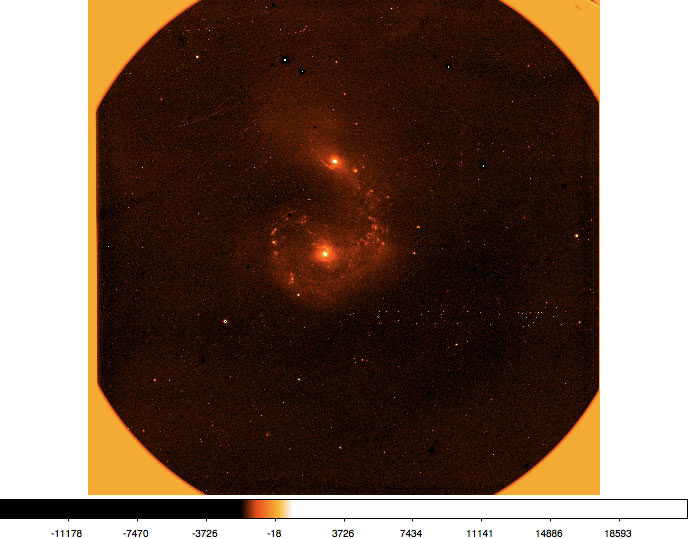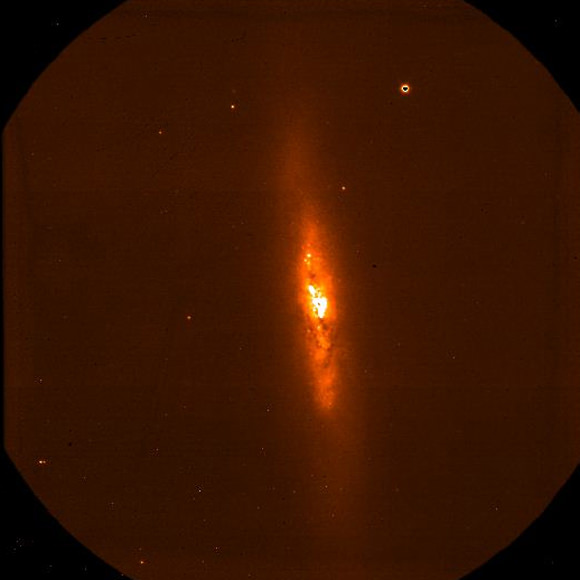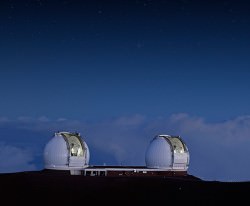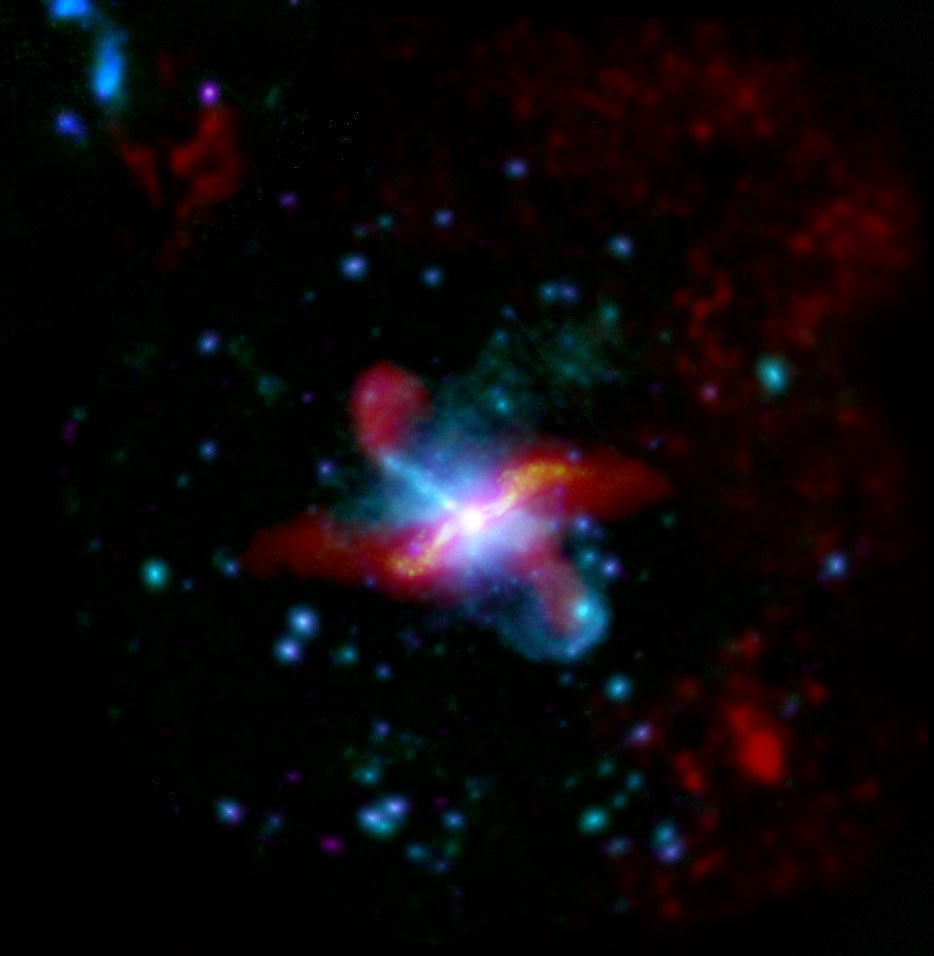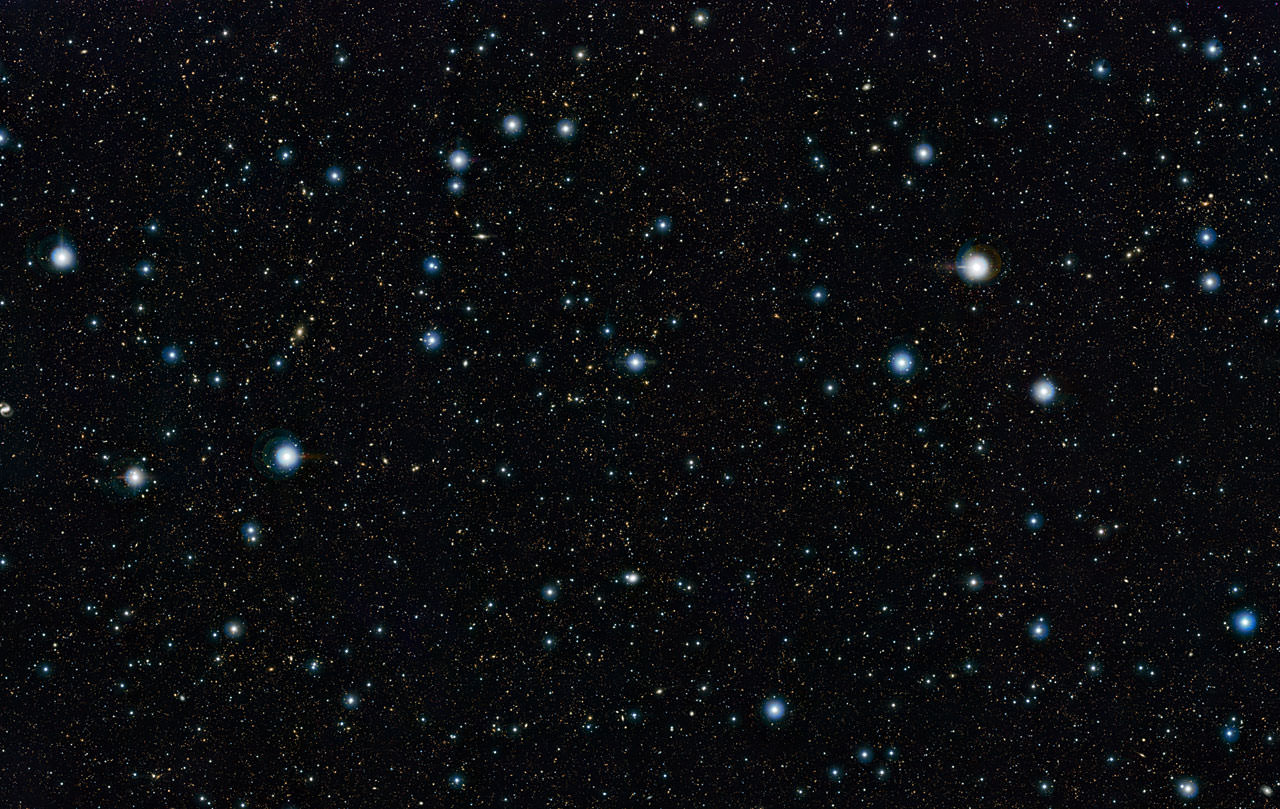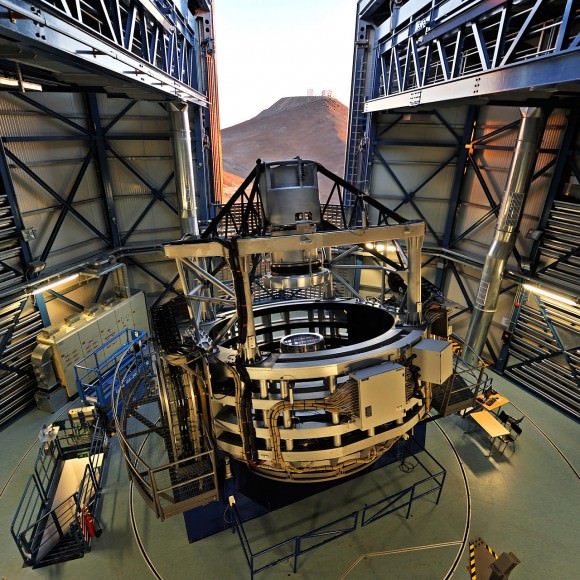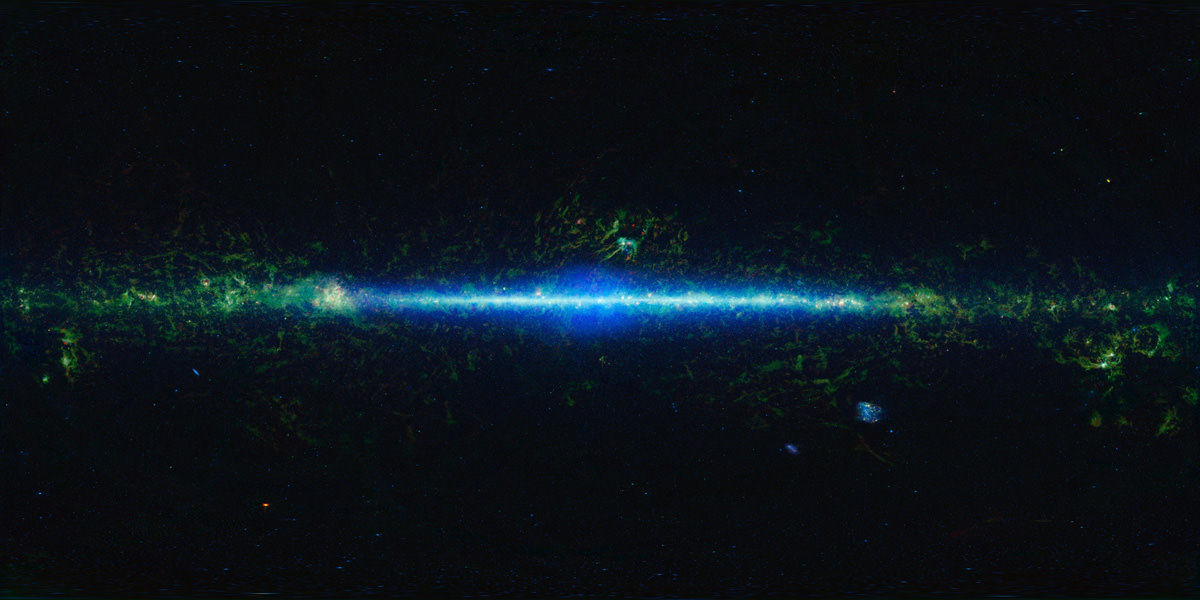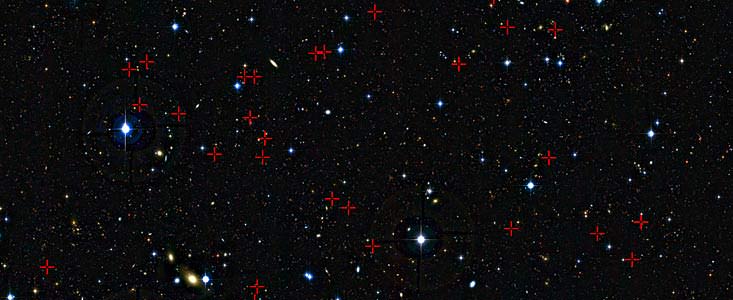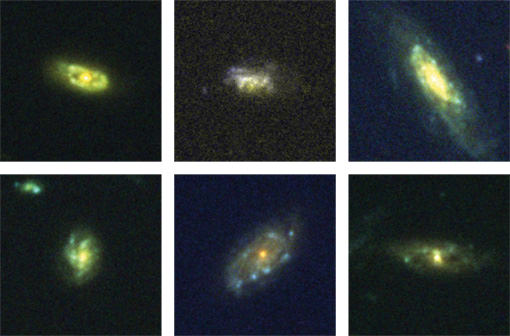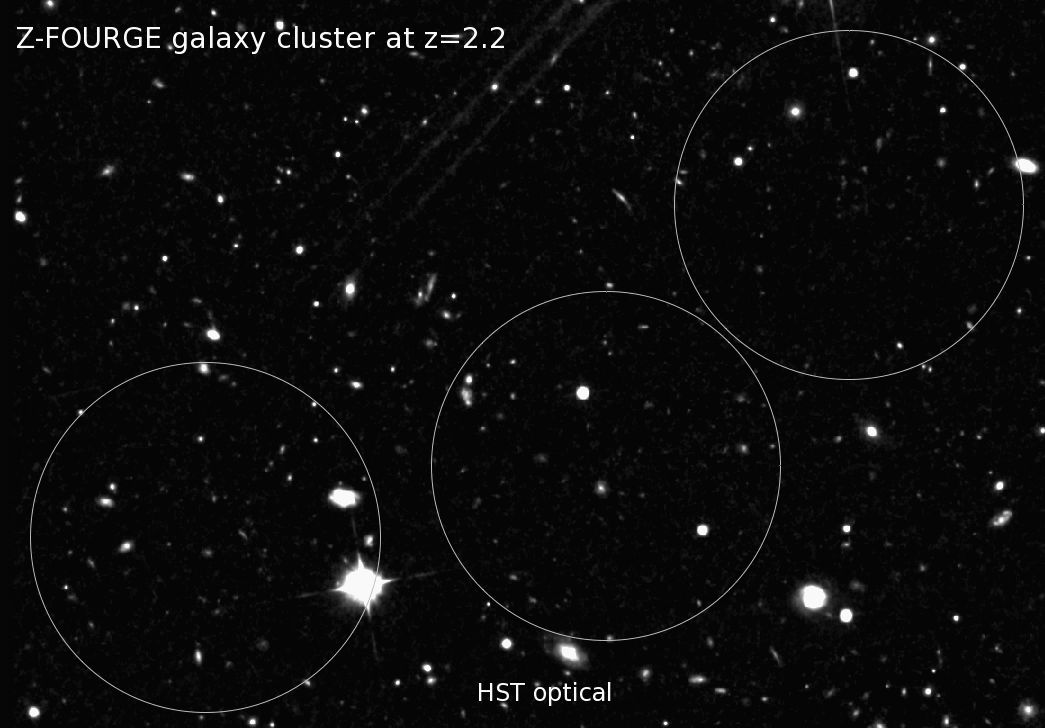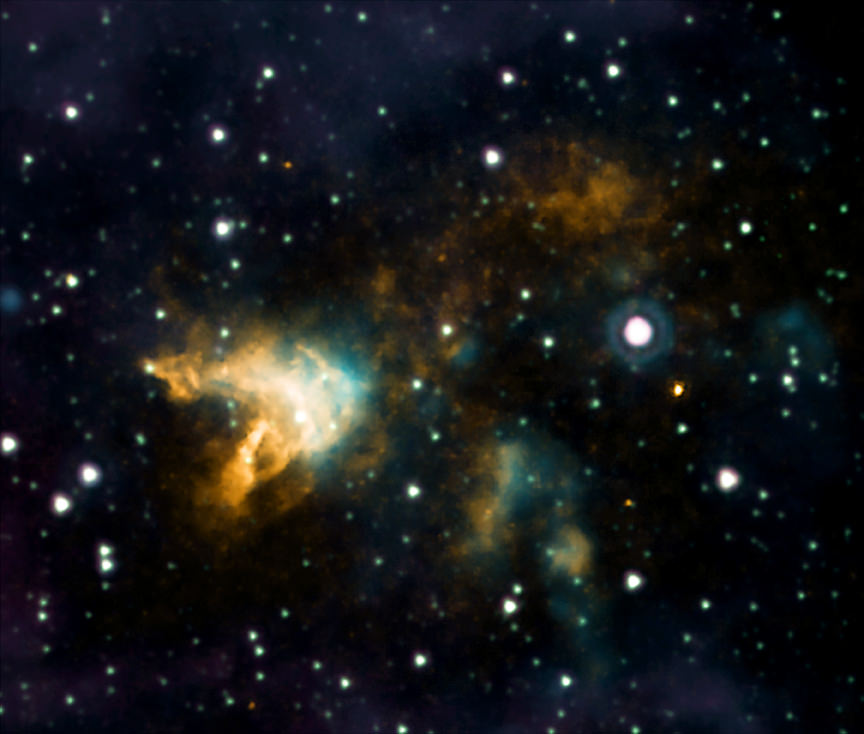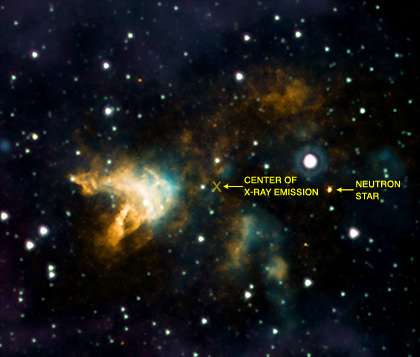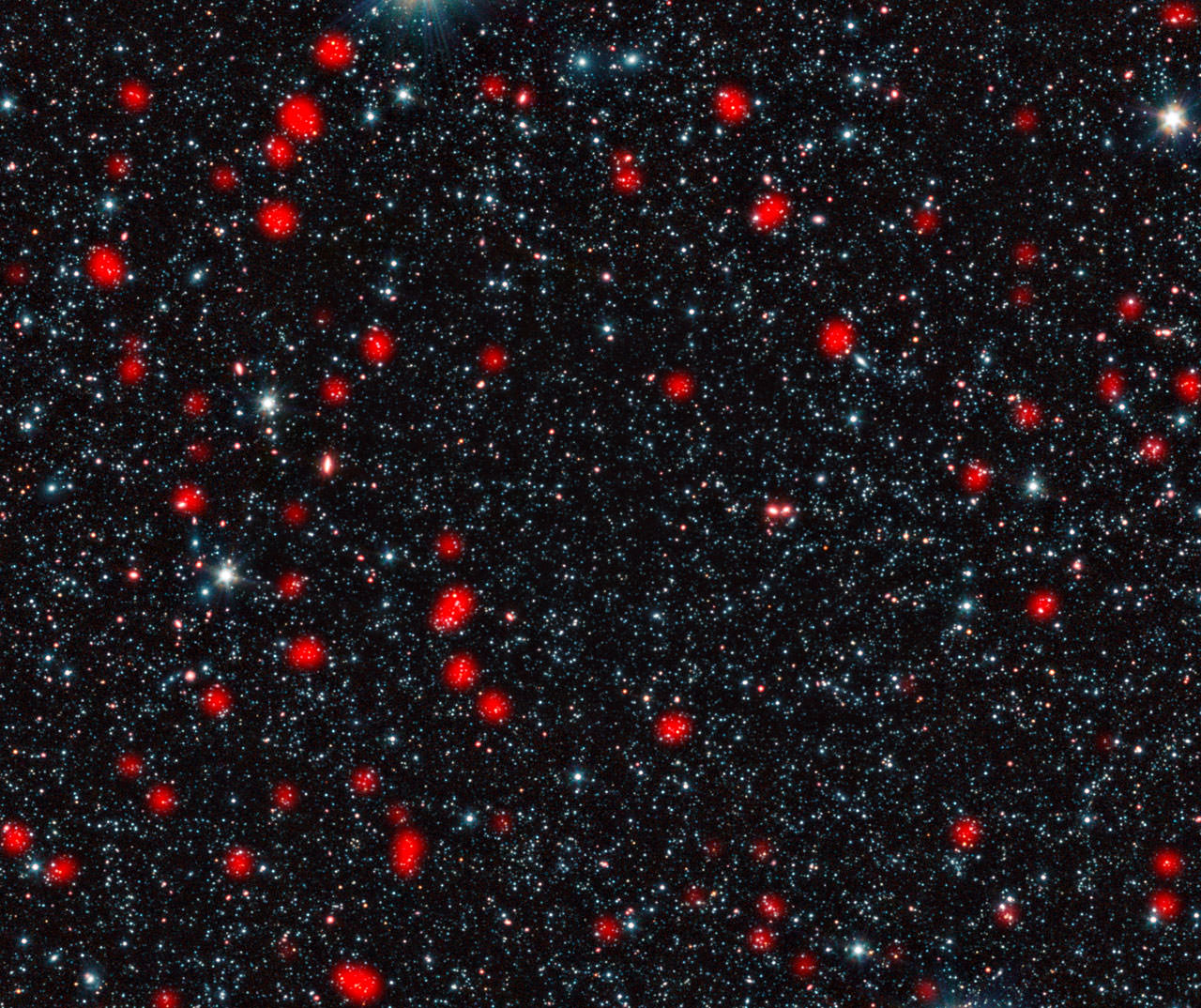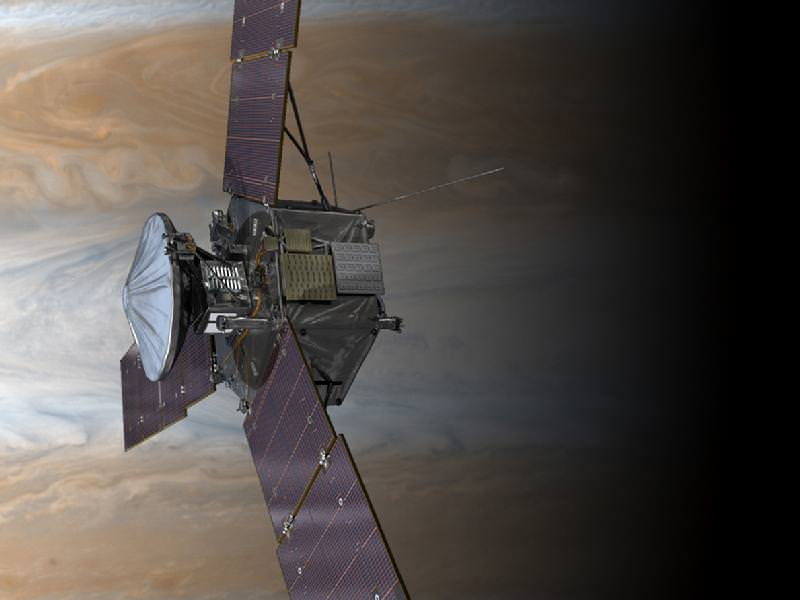[/caption]
The Spitzer Space Telescope’s Infrared Array Camera (IRAC) is a cool camera, no matter what temperature in which it operates! For 1,000 days now, the camera has been continuously taking images of the Universe – from its most distant regions to our local solar neighborhood. The IRAC is now operating in a “warm” version of its mission, as after more than five-and-a-half years of probing the cool cosmos, in 2009 it ran out of liquid helium coolant that kept its infrared instruments chilled.
“IRAC continues to be an amazing camera, still producing important discoveries and spectacular new images of the infrared universe,” said principal investigator Giovanni Fazio of the Harvard-Smithsonian Center for Astrophysics.
To commemorate 1,000 days of infrared wonders, the program is releasing a gallery of the 10 best IRAC images, featuring images from both the cold and warm portions of its mission. Above is #1: The IRAC has uncovered some mysterious objects like this so-called “tornado” nebula. Because the camera is sensitive to light emitted from shocked molecular hydrogen (seen here in green), astronomers think that this strange beast is the result of an outflowing jet of material from a young star that has generated shock waves in surrounding gas and dust.
See more below:
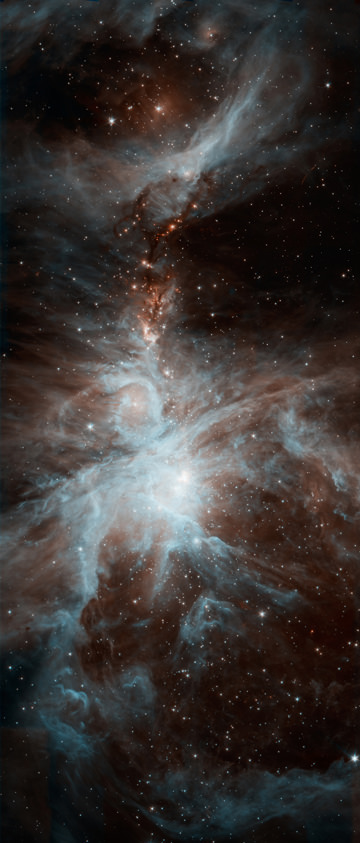
#2. A ‘warm’ look at the famous nebula in Orion, located about 1,340 light-years from Earth, is actively making new stars today. Although the optical nebula is dominated by the light from four massive, hot young stars, IRAC reveals many other young stars still embedded in their dusty womb. It also finds a long filament of star-forming activity containing thousands of young protostars. Some of these stars may host still-forming planets.
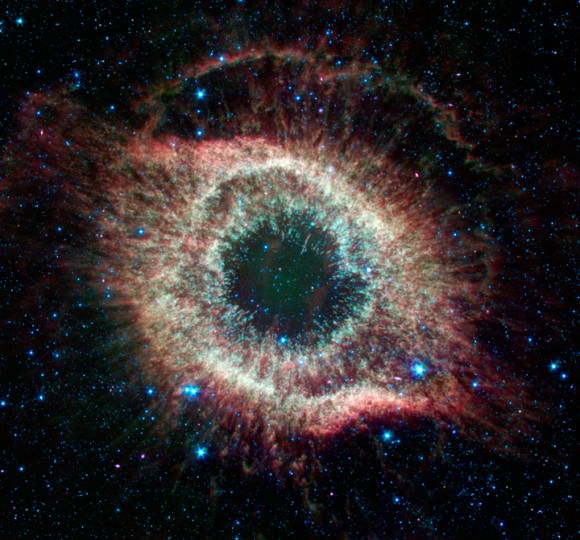
#3. After a long life of hydrogen-burning nuclear fusion, stars move into later life states whose details depend on their masses. This IRAC image of the Helix Nebula barely spots the star itself at the center, but clearly shows how the aging star has ejected material into space around it, creating a “planetary nebula.” The Helix Nebula is located 650 light-years away in the constellation Aquarius.
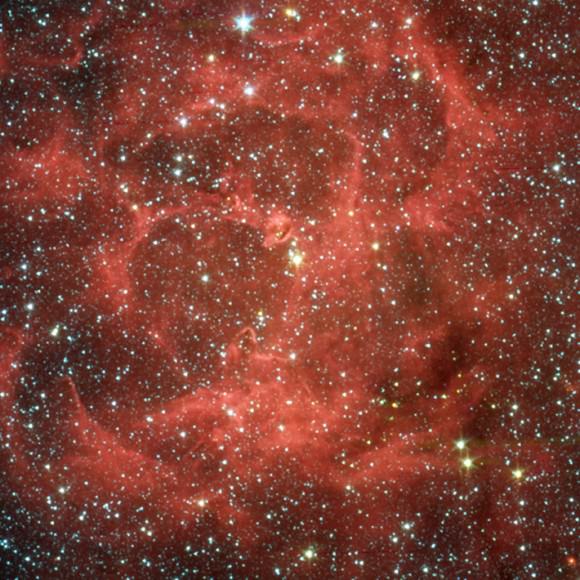
#4. Located 5,400 light-years away in the constellation Sagittarius, the Trifid Nebula appears as a big maze of gas and dust. Here, Spitzer’s IRAC was observing how the processes of stellar evolution affects the surrounding environment. The Trifid Nebula hosts stars at all stages of life, and with images like this, scientists can observe how stars mature.
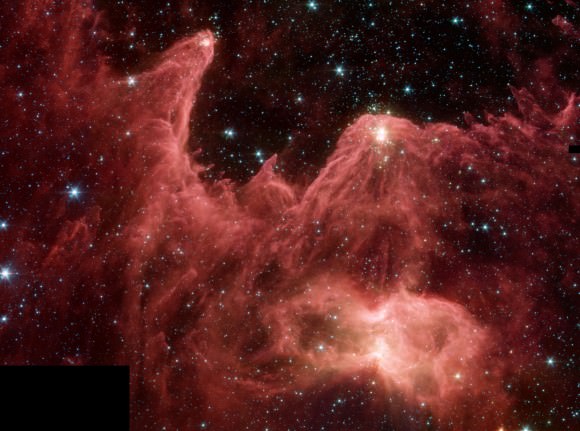
#5. Within galaxies like the Milky Way, giant clouds of gas and dust coalesce under the influence of gravity until new stars are born. IRAC can both measure the warm dust and peer deeply into it to study the processes at work. In this giant cloud several stellar nurseries can be seen, some still within the tips of the dusty region that has been called the “Mountains of Creation, 7,000 light-years away from Earth.
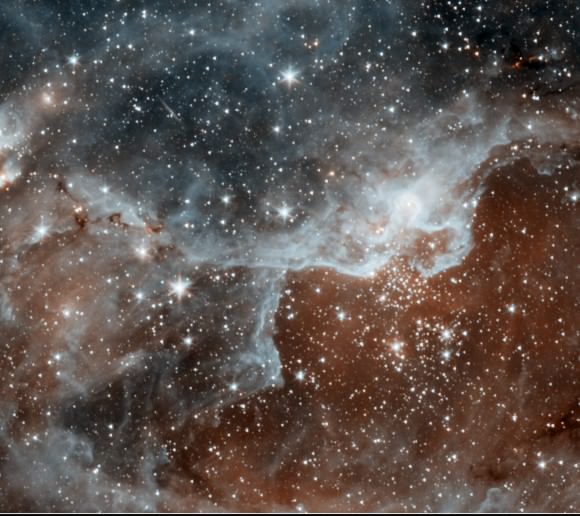
#6. After blowing away its natal material, the young star cluster seen here emits winds and harsh ultraviolet light that sculpt the remnant cloud into fantastic shapes. Astronomers are not sure when that activity suppresses future star formation by disruption, and when it facilitates star formation through compression. The cluster, known as DR22, is in the constellation Cygnus the Swan.
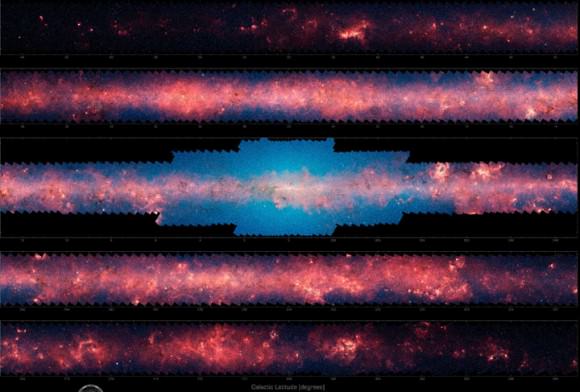
#7. IRAC has systematically imaged the entire Milky Way disk, assembling a composite photograph containing billions of pixels with infrared emission from everything in this relatively narrow plane. The image here shows five end-to-end strips spanning the center of our galaxy. This image covers only one-third of the whole galactic plane. Astronomers unveiled a 55-meter version of the image at the AAS meeting in June of 2008, and you can see the entire image on the GLIMPSE (Galactic Legacy Infrared Mid-Plane Survey Extraordinaire) Image Viewer, which provides a great way to view and browse this image.
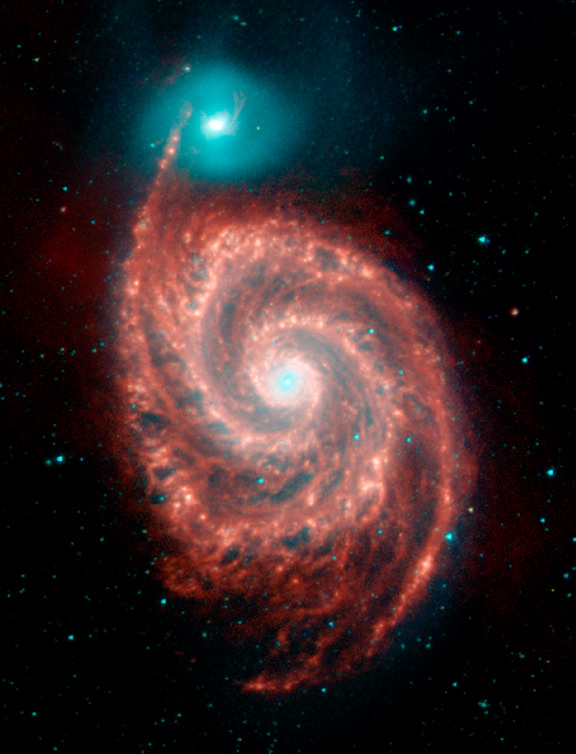
#8. Collisions play an important role in galaxy evolution. These two galaxies – the Whirlpool and its companion – are relatively nearby at a distance of just 23 million light-years from Earth. IRAC sees the main galaxy as very red due to warm dust – a sign of active star formation that probably was triggered by the collision.
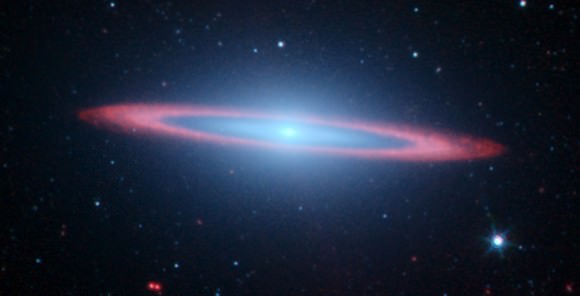
#9. Star formation helps shape a galaxy’s structure through shock waves, stellar winds, and ultraviolet radiation. In this image of the nearby Sombrero Galaxy, IRAC clearly sees a dramatic disk of warm dust (red) caused by star formation around the central bulge (blue). The Sombrero is located 28 million light-years away in the constellation Virgo.
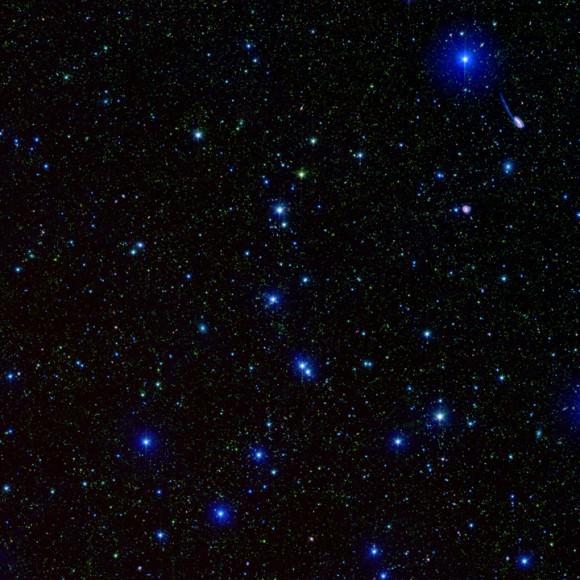
#10. And coming in at #10 is this lovely image showing many points of light. They aren’t stars but entire galaxies. A few, like the mini-tadpole at upper right, are only hundreds of millions of light-years away so their shapes can be discerned. The most distant galaxies are too far away and appear as dots. Their light is seen as it was over ten billion years ago, when the universe was young.
Will we see more from Spitzer? Certainly. NASA’s Senior Review Panel has recommended extending the Spitzer warm mission through 2015.
See larger versions of these images at the Harvard Smithsonian Center for Astrophysics website.

